We may be compensated if you purchase through links on our website. Our Reviews Team is committed to delivering honest, objective, and independent reviews on home products and services.
Repairing a chipped wood floor doesn’t always require replacing an entire floorboard. With the right techniques, you can effectively patch small chips and gouges to restore your floor’s appearance. Follow along with the video above to learn Ask This Old House expert Tom Silva’s favorite methods for fixing damaged wood floors.
Types of Wood Floor Damage
Wood floors are susceptible to various types of damage, including chips, gouges, and scratches. These imperfections can happen because of heavy furniture, dropped objects, or regular wear and tear. Understanding the extent of the damage helps you determine the appropriate repair method.
Here are some common types of wood damage:
- Chips: Small pieces of wood that have broken off the surface.
- Dents: Compressed areas of wood caused by impact.
- Gouges: Deep indentations or grooves in the wood.
- Scratches: Shallow marks on the surface of the wood.
Assessing the Damage
Before beginning any repair, carefully examine the damaged area. Gauge the size, depth, and location of the damage. This assessment will help you decide whether to reattach the original piece, create a Dutchman patch, or use wood filler for smaller imperfections.
Reattaching a Chipped Piece of the Floor
If you’ve managed to save the original chipped piece of wood, reattaching it is often the simplest and most effective repair method. This technique works best for clean breaks where the chip fits perfectly back into place.
Tools and Materials
Gather the following materials and tools:
- Countersink bit
- Damp rag
- Drill/driver
- Handsaw
- Polyurethane glue
- Screws
- Wood glue
Step 1: Select the Patch Material
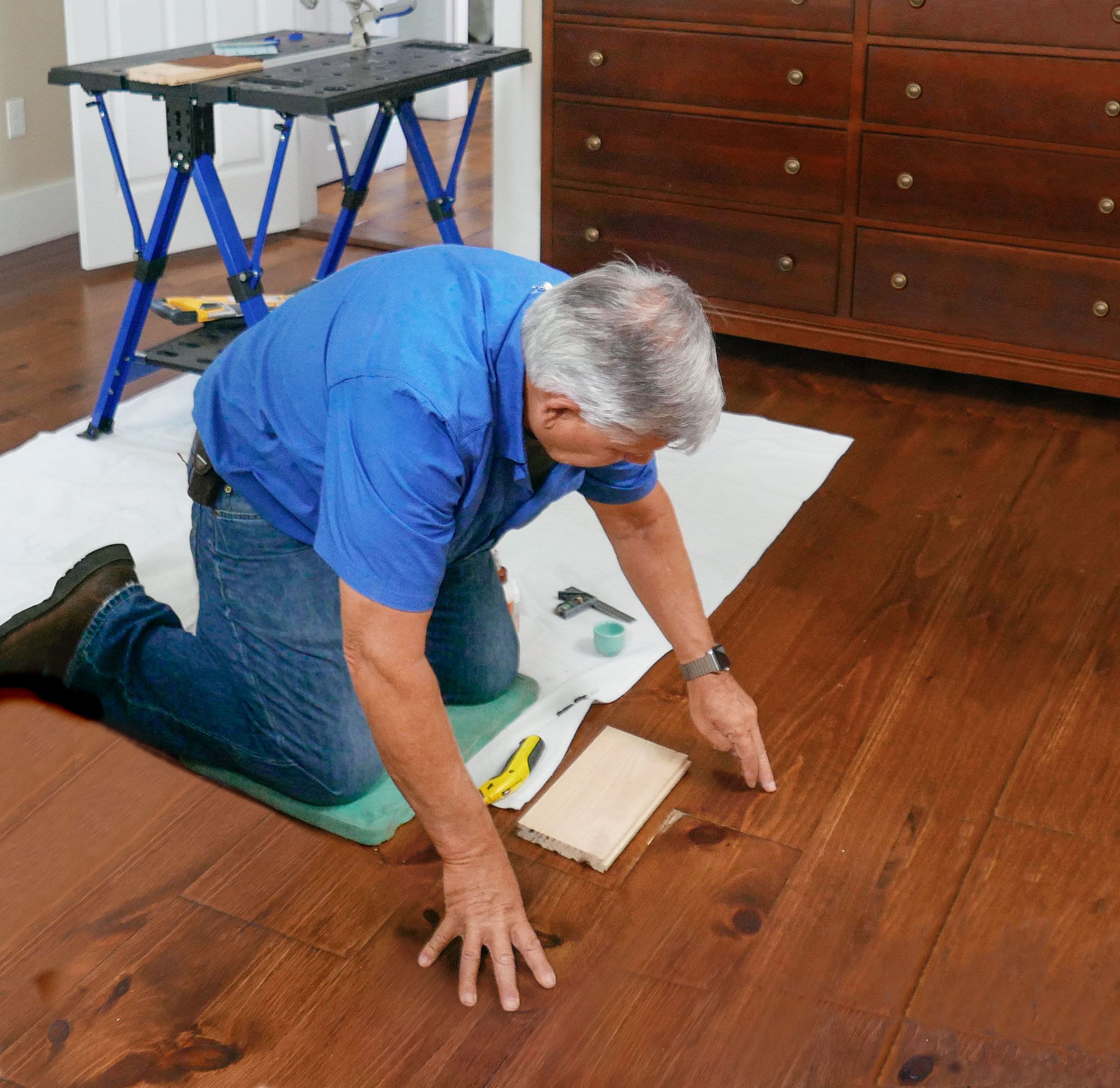
Find a scrap of wood of the same species as the flooring—in this case, Silva uses a leftover piece of unstained pine flooring.
Step 2: Drill and Glue
Drill a hole through the chipped part of the floor using a countersink bit. Drop a little bit of water in the hole, then add some polyurethane glue. Drive a screw through the hole, securing the floorboard back to the floor.
If you saved the chipped piece of the floor, you can glue it back on the floor with wood glue. Be sure to cover all the exposed wood with glue before re-securing the patch. Wipe off any excess glue on the patch with a wet rag.
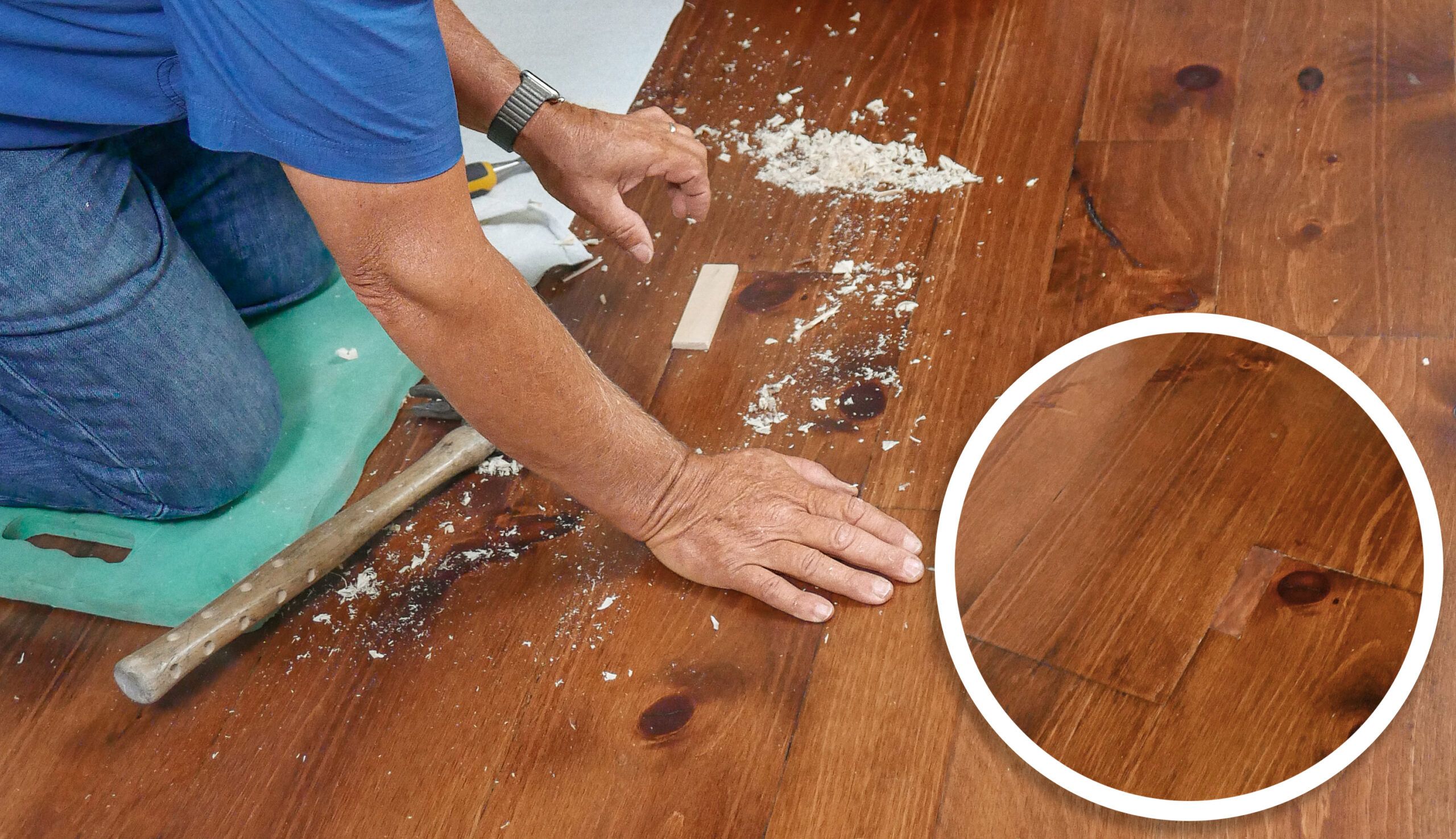
Creating a Dutchman Patch for Your Chipped Wood Floor
For larger or more complex damage, creating a Dutchman patch is Silva’s solution of choice. This method involves cutting out the damaged section and replacing it with a custom-fit piece of matching wood.
Tools and Materials Needed
Gather the following materials and tools for this method:
- Block plane
- Chisel
- Drill
- Forstner bit
- Handsaw
- Polyurethane finish
- Scrap wood of the same species as the flooring
- Stain
- Utility knife
- Wood glue
Steps To Create a Dutchman Patch
If you don’t have the chipped piece or it doesn’t fit back into the hole perfectly, you’ll need to make a Dutchman. Examine the floorboard and find a section of it that matches the grain around the rest of the floorboards near the chip.
Silva’s tips for this method include:
- Match the grain, not the stain. Choose a patch of the same wood as the flooring, with a similar grain pattern.
- Make the mortise fit the patch, not the other way around. It’s the smart way to get a tight fit.
- Plane a slight bevel into the patch’s bottom edges. The patch will then slide easily into the mortise and still fit tightly.
- Don’t sweat matching the floor stain. You can get the patch color to be close, but a perfect match? Not likely.
Step 1: Cut a Patch to a Rough Size
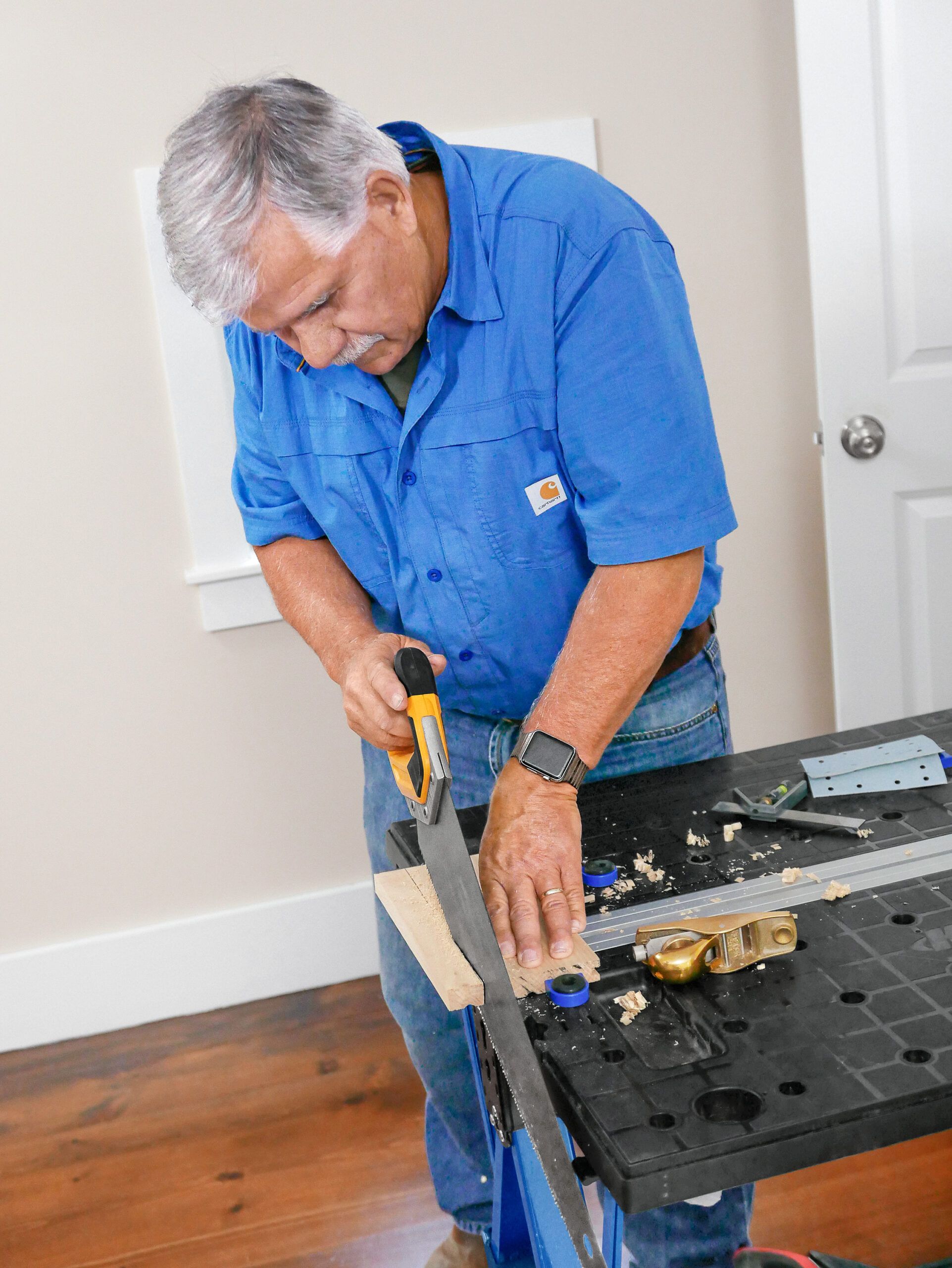
Use a block plane to true up the edge of the floorboard chosen for the patch. On the scrap, locate a portion that’s wider and longer than the damaged area and has a similar grain. Cut out a strip with a handsaw, as shown, and remove the saw marks with a block plane.
Step 2: Rip and Plane to Final Thickness
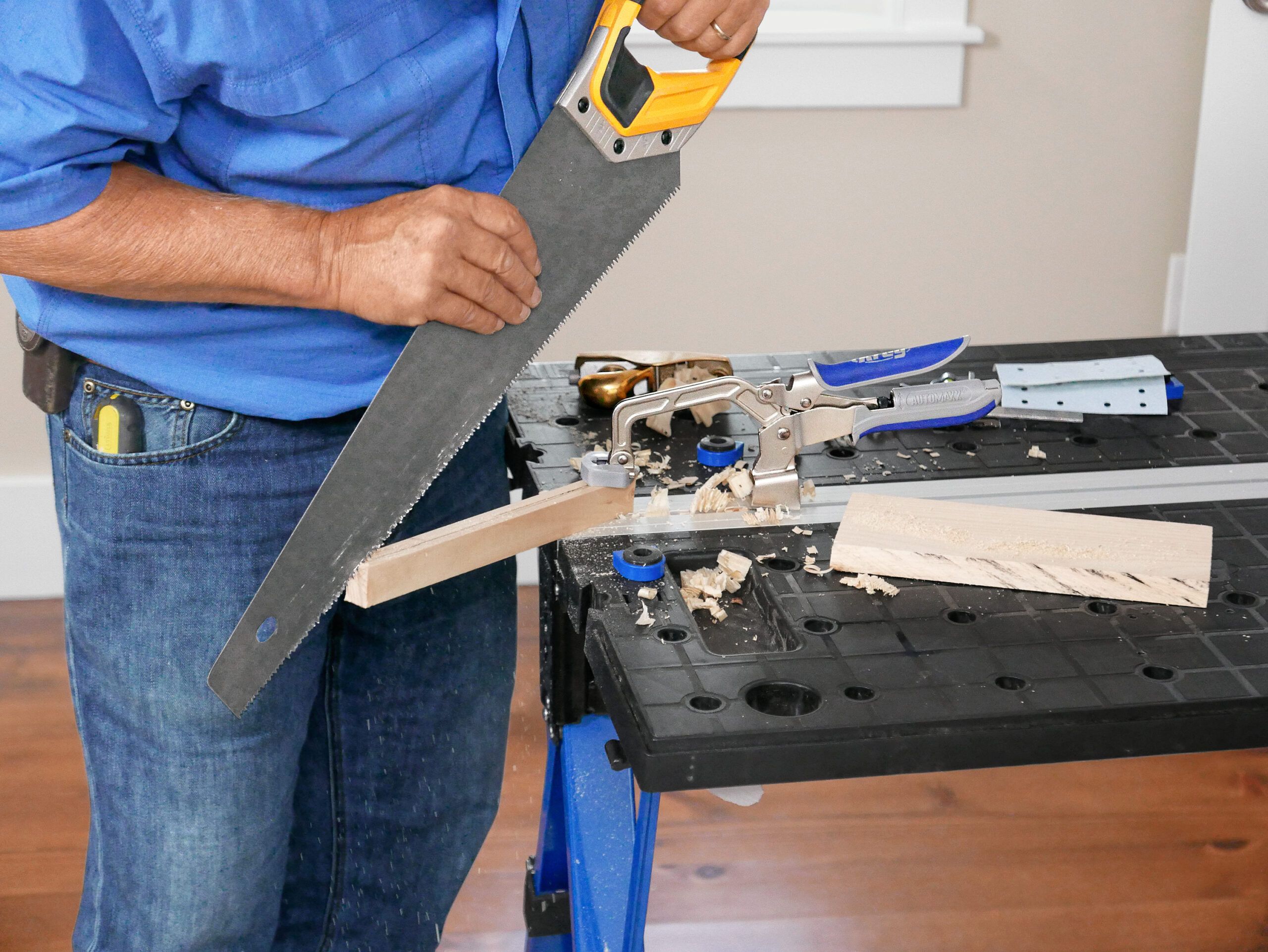
Cut the patch roughly to size using a handsaw. First, rip the patch to a rough width. Then rip the patch in half so it’s half the thickness of the floorboard. Square one end of the Dutchman using the block plane. Finally, check the end for squareness with a combination square.
Step 3: Mark the Mortise

Hold the Dutchman up to the section of the floor requiring the patch. Mark the length just slightly past where the chip ends, then cut the Dutchman to length based on the mark. Hold the Dutchman over the chip, and trace around the outside of the patch using the utility knife.
Step 4: Cut the Mortise
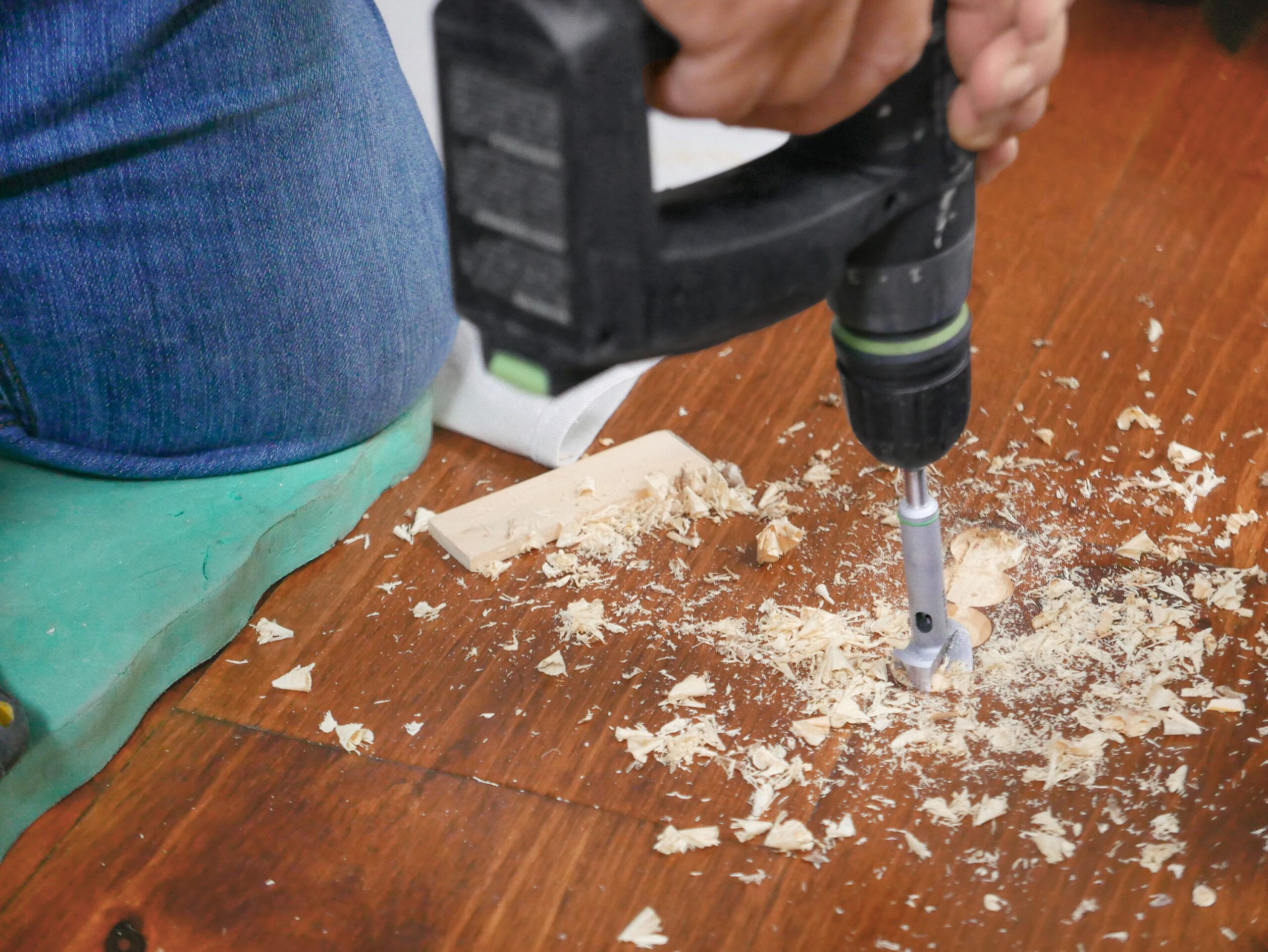
Chisel out the outlined section of the floor roughly the thickness of the patch. To save time, Silva uses a drill with a Forstner bit and then switches to the hand chisel for fine-tuning. Pitch the Dutchman at an angle and shave off a little bevel on each side with the block plane so the patch will fit easier in the floor.
Step 5: Stain the Patch
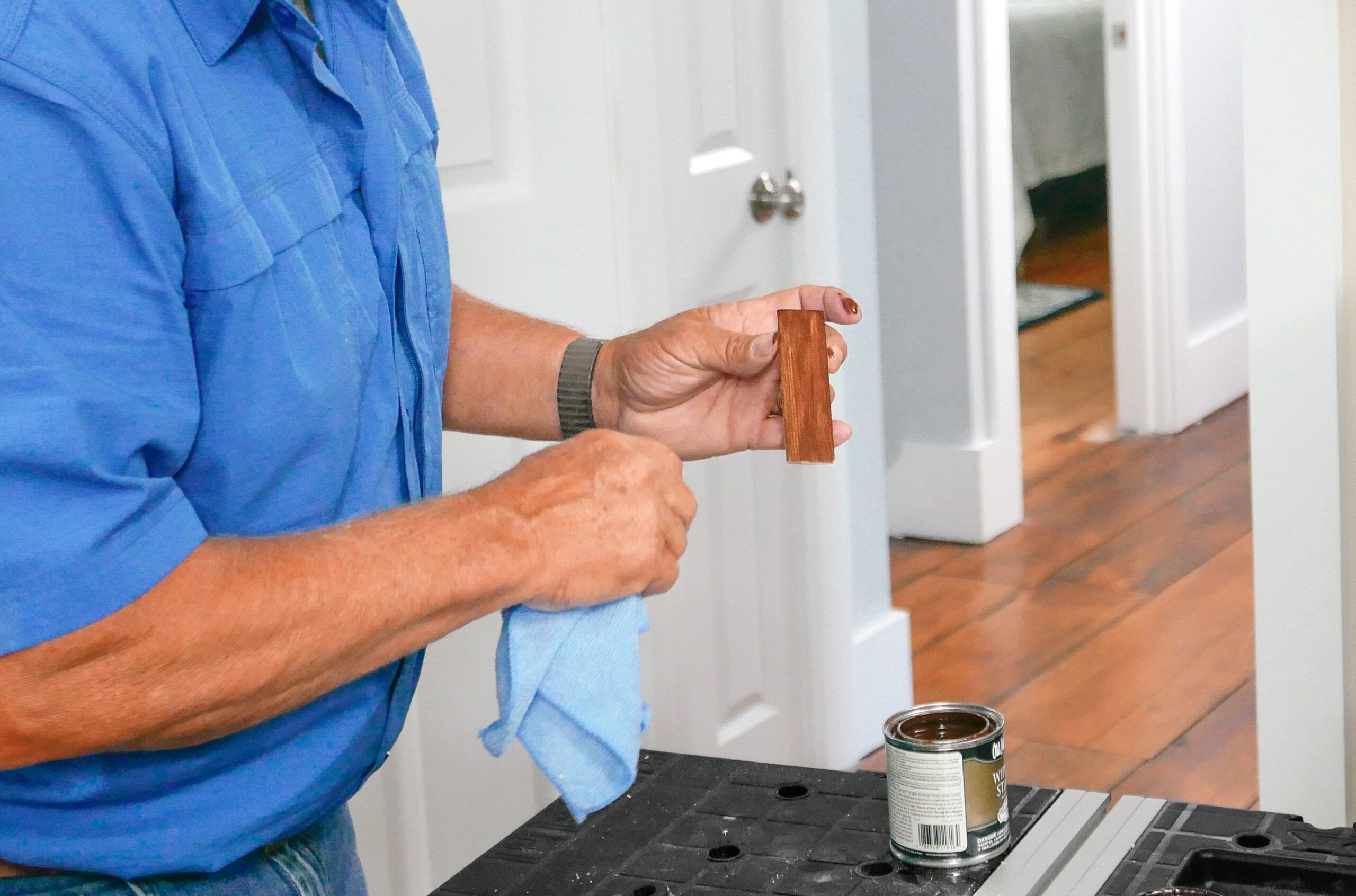
Once the Dutchman fits the hole, pre-stain it with a rag. Let the stain sit for about five minutes. Stain the Dutchman with a rag, then let it dry for a few minutes.
Step 6: Glue the Patch in Place
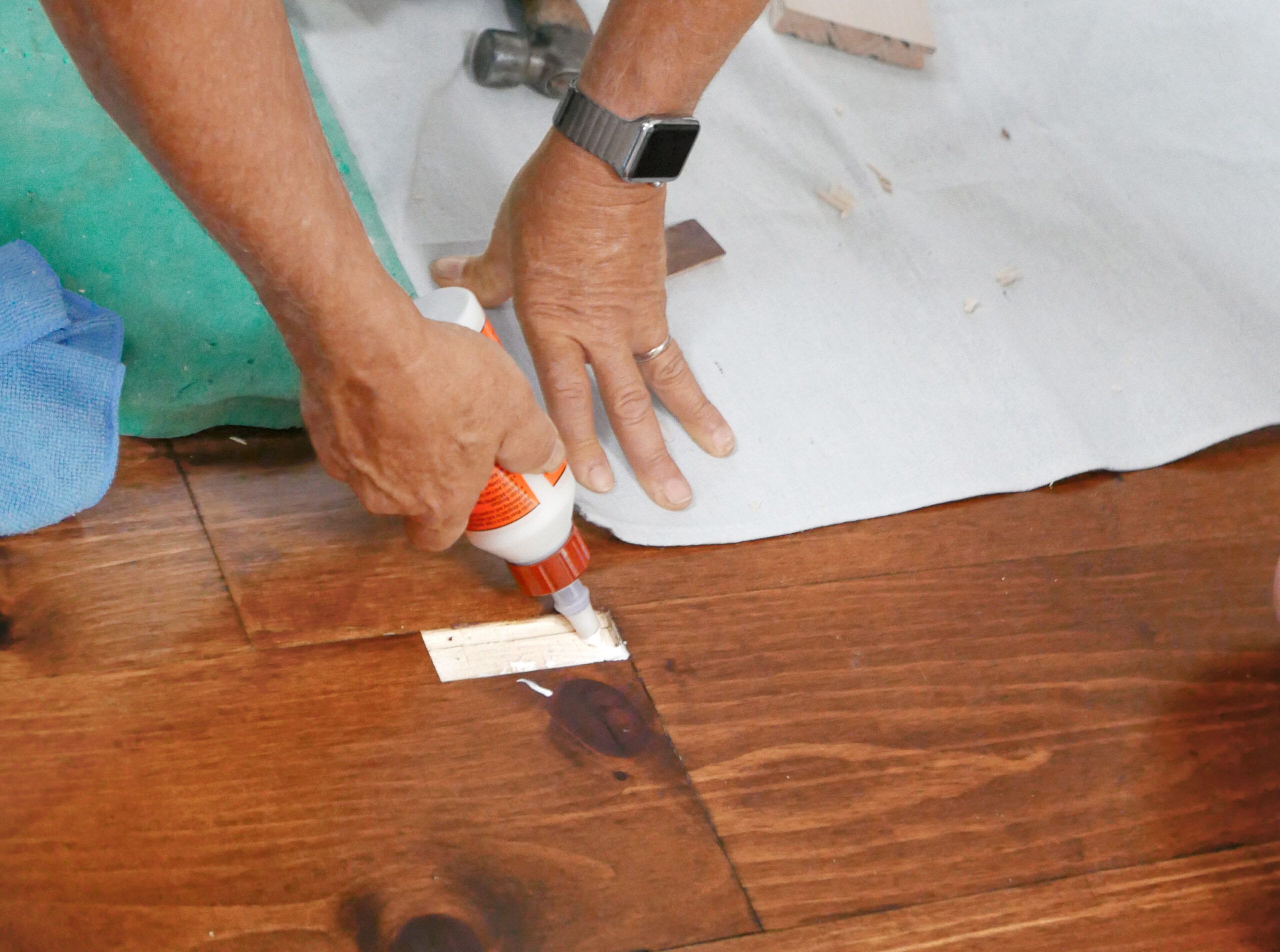
Apply wood glue to the hole in the floor. Make sure to cover all the raw wood with glue. Re-secure the Dutchman and wipe off excess glue with a rag. Tape around the patch and let it sit overnight.
After about 24 hours, add a few coats of polyurethane until the patch blends in with the rest of the floor.
Tips for a Successful Repair of a Chipped Wood Floor
Achieving a professional-looking repair requires attention to detail and patience. Here are some tips to make sure your wood floor patch blends seamlessly with the surrounding area.
Matching Wood Grain
Match the wood grain with the following steps:
- Align the grain direction of the patch with the existing floorboards.
- Choose a patch piece with a grain pattern similar to that of the surrounding floor.
- Remember that matching the grain is more important than matching the exact color.
Staining and Finishing
Here are some tips for staining and finishing:
- Allow the stain to dry completely before applying the polyurethane finish.
- Apply multiple thin coats of polyurethane for a durable, even finish.
- Apply stain to the patch before gluing it in place to prevent staining the surrounding floor.
- Use a pre-stain wood conditioner on softwoods to get even stain absorption.
Blending the Repair
Here’s how to blend the repair:
- Bevel the edges of the patch to create a tight fit at the surface.
- Use a wood grain pen to add subtle details that match the existing floor.
- Use painter’s tape around the patch when applying the finish to protect the surrounding floor.
When To Call a Professional To Fix Your Wood Floor
While you can handle many wood floor repairs yourself, some situations may require professional assistance. We recommend calling in the pros if you encounter:
- Complex patterns or inlays that require precise matching
- Extensive damage covering a large area
- Lack of confidence in your ability to achieve a seamless repair
- Repairs on antique or rare wood flooring
- Structural issues affecting the subfloor
Professional floor refinishers have the tools and expertise to handle more challenging repairs and achieve flawless results.







